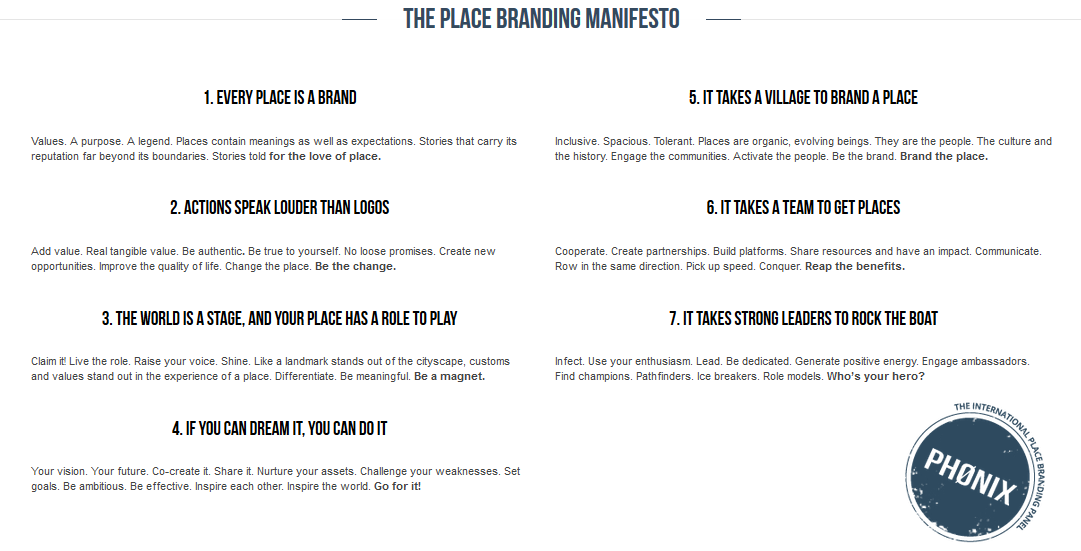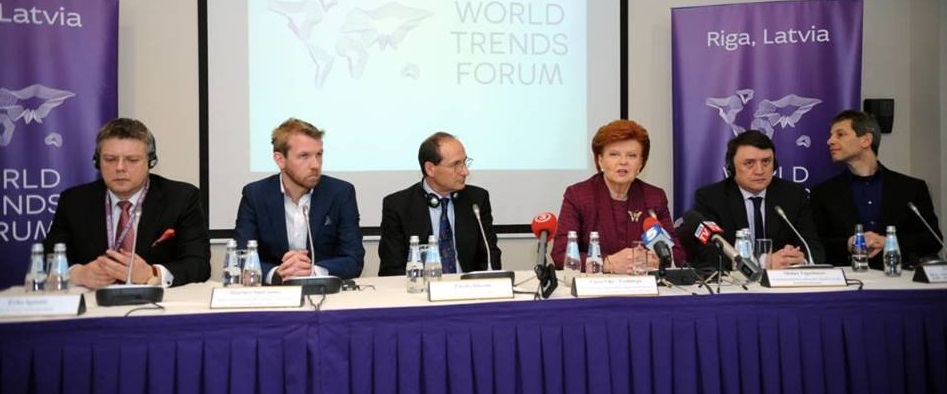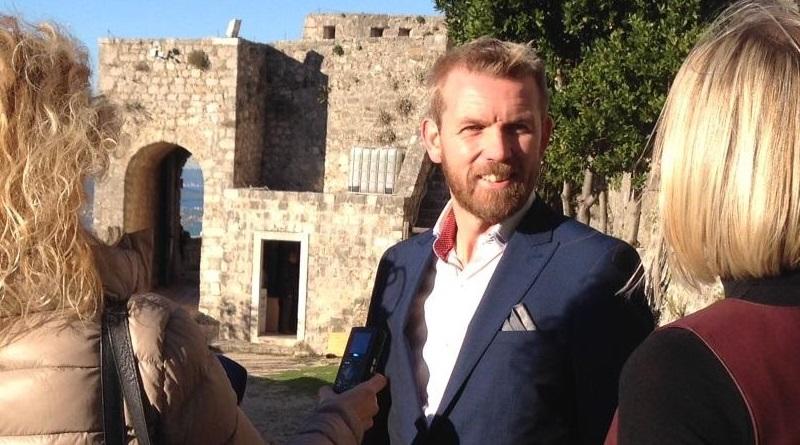One of the things we like most about interviewing world’s leading place branding professionals is that often their stories and experiences are truly breath-taking. Hjörtur Smárason is no exception, quite the contrary. Originally from Iceland, this globetrotter has recently made headlines for supporting Nepal after its earthquake.
His latest mission is to turn Africa’s image upside down by gearing attention towards the continent’s fast-growing, entrepreneurial cities, and at the same time helping those become more sustainable, smart and resilient.
Learn about:
- Some of the challenges when it comes to place branding initiatives;
- Which cities in Africa are currently leading in the areas of urban planning, innovation, and sustainability;
- How the role of community participation is essential in place branding.
Hjörtur, what fascinates you about place branding? Why did you decide to get involved in this field?
I got a job at an advertising agency working with some exciting brands like Peugeot and Mastercard with great results. Our campaigns won international awards in both Europe and the US and delivered good results. I knew I had a talent but I felt I wasn’t using it on anything meaningful. So I quit.
The last project I got before I quit was to work with a small village raising the number of inhabitants from 700 to 1.000 within 5 years. I really enjoyed the process and long story short, we achieved our goal selling all the new lots within 4 weeks from the launch of the campaign.
This was back in 1999 and I have slowly been working my way into this field ever since. I had already a degree in anthropology and studied further negotiation tactics and public diplomacy in Lund in Sweden and economic development with focus on participatory theories in CBS in Copenhagen, a combination that has proven to be very useful for place branding.
In 2006 I had the opportunity to work with Simon Anholt on the brand of Iceland and after the economic crisis in Iceland in 2008 and the volcanic eruption in 2010, I decided to work internationally. Often my work is focused on crisis management and crisis recovery. The last year I have advised Nepal after the earthquakes, areas in rural Greece, and Ecuador after their earthquake last month.
I find that through place branding I can really make a difference for the communities I am working with and improve the lives and opportunities of the citizens. It makes my work meaningful.
In 2014, you co-founded Phønix, the International Place Branding Panel. What is Phønix’s mission?
Phønix’s mission is to raise the bar of place branding and agreeing on a number of best practices in the industry. The idea was formed at a bar in Minsk in Belarus, where we met for the Open Festival on ”territorial marketing”. We were tired of seeing place branding initiatives fail again and again because they were run like advertising campaigns, with the main emphasis on logos and slogans.
For us, place branding is much deeper and more complex than that. So we came together again in London and wrote the Place Branding Manifesto, a basic understanding of the practices of place branding which we all could agree on. The panel was then formed around that; a group of experts who all have their own businesses focusing on different angles and aspects of place branding.
Then, having this panel allowed us to create powerful teams of experts based on the needs of each client. This setup was created at a café in Copenhagen where I live now and as we were scribbling name ideas on napkins at the café, we realized the best name was already written on the napkin. Phønix. Hence the Danish spelling of it.
At Phønix we see place branding as a very powerful tool for reinventing places and helping them rise from whatever crisis or challenges they may find themselves in.

In your experience, which are the biggest challenges when it comes to place branding initiatives? How far is theory from practice?
One of the biggest challenges is getting people to understand that place branding is not about advertising, catchy slogans and fancy commercials. It is about creating an understanding among the people that make the place, and an experience among the visitors which they themselves will then communicate to the outside world.
Place branding is actions first, words second.
Another big challenge is politics. Place branding initiatives have to rise above personal ownership and party politics. It has to be a common initiative across political lines. Otherwise there is a great risk the initiatives will get strong local enemies and potentially be killed completely after the next election.
The reality of place branding is full of internal challenges, while the theories focus largely on the external impact of place branding.
The impact of image and identity in public diplomacy, economic development, export and tourism is important for the purpose of place branding, but not really relevant to the execution of the process.
The Future City of Africa Conference is going to take place in June 2016. As the Conference organizer, what do you expect from it and which are the KPIs that will render the event successful?
I believe African cities have a unique opportunity to position themselves as the leading cities in implementing smart city solutions and sustainable urban design. African cities are in general not the first cities that come to mind when you think of these solutions, but with the fastest urbanization in human history taking place in those cities in the coming decades they have the opportunity to leapfrog over the infrastructures of the 20th century and shape the future city.
I have seen this happening in digital health and mobile banking, where Africa has already taken the lead.
The limitations of existing infrastructures may in fact turn out to be Africa’s greatest asset. This means that for one thing, people have to think different kind of solutions based on the resources they have – often the mobile phone, and secondly that solutions can be implemented much faster because they are not competing with heavy infrastructures and big investments in existing systems.
There is therefore little resistance towards the implementation, which gives them a big competitive advantage. Today’s technology is in many cases much cheaper than previous solutions, making this a very realistic option for the development of African cities.
The aim of the conference is to bring together global thought leaders with the decision makers of the continent in order to discuss ideas and next steps. While the aim of the conference is clearly to spark discussions about the potential of the cities, it is equally important to us that it doesn’t just end there.
The Phønix panel will therefore be running a 2-3 year long program where we invite 10 progressive cities to take part. The aim of this program is to get the cities to commit to a process, which includes the following: create a strong vision for their city, engage the citizens in fulfilling that vision and position the city globally based on that vision, while attracting the right investments, partners and talents. We want them to get involved in the process and follow all the nice ideas, phrases and statements with real actions in the coming years.
We have already received great interest in the conference, with participation of leading media outlets, such as Forbes Africa, CNBC Africa which will be creating two 30 minutes TV shows about it, Mail & Guardian, the Ogojiii design magazine and of course The Place Brand Observer.
In which city of Africa do you see the concepts of urban planning, innovation and sustainability more developed in substance? Where do you see most potential for “THE CITY of the 21st century”?
There are already cities developing very fast and experimenting with innovative solutions, such as Durban, Johannesburg and Cape Town in South Africa, Nairobi and Addis Ababa in East Africa and Abidjan, Accra and Lagos in West Africa.
I wouldn’t be surprised though if some of the smaller cities might take the lead as the most innovative cities. Kigali has been starting some very impressive initiatives lately and is definitely a city to watch. Libreville in Gabon is a city that is generally under the radar but has a hidden potential to become the leading city in Central Africa. Then there are wild cards like Juba in Africa’s youngest democracy, South Sudan. If South Sudan manages to stabilize the political situation and attract investment, then the city will have great growth potential.
In your view, which is the main challenge that African urban governments need to overcome for a real chance to position the continent’s cities among world’s most smart, resilient and innovative (sustainable)?
If we look at the image of Africa outside of Africa, there are primarily two things that come to people’s minds. The first one is the image of exotic animals with zebras, giraffes, lions and elephants. The fascinating wild life. The second one is not as fascinating, and that is the one of war, poverty and diseases. The latter is the images promoted relentlessly by NGO’s across the world to raise funds and has in reality done tremendous damage to the image of Africa.
Most people don’t realize there is a third Africa. The urban Africa which is dynamic, very creative, entrepreneurial and tech savvy. The world’s most expensive city last year was actually an African city, Luanda in Angola, to the surprise of most people. The absent images of the urban Africa can actually be a good thing, because it opens up the opportunity for cities on the continent to position themselves as the new urban Africa, which should be taken seriously by the world.

700 million people are expected to move to the cities until 2050, a fact which signals that urban Africa will be the leading growth zone for the next 20 years. Apart from the massive opportunities, do you see any threats in this prediction?
We can look at the opposite extremes. The success story will be African cities taking the lead in developing the smart, sustainable mega-cities of tomorrow. In fact, this is the idea that we are trying to communicate through our Future City of Africa conference.
The horror story will be that those cities becoming giant hellholes of poverty and human misery, sparking migration in previously unseen magnitude. The current refugee crisis in Europe with just over 1 million refugees a year from Syria will be a child’s play in comparison.
Somewhere in between is the story of the wasted opportunity, where the cities do develop, but based on outdated philosophies and infrastructure from the 20th century. Today about 54% of the world’s population lives in cities, consuming 75% of all energy and producing 80% of all green house gasses. Imagine the pressure on the global climate and natural resources if the 700 million people added to the cities take up the wasteful lifestyle of excessive consumption and pollution we are fighting against in the West.
So, I am betting on the first scenario. I have already seen what African innovators and entrepreneurs have achieved when it comes to mobile banking and digital health where they have leapfrogged over the heavy infrastructures the West is caught in. I believe they can do the same with the cities. It’s doable, though not easy, and it has to start right now.
 Which is the role of the community participation? Is there a need to educate or train residents related to innovation, infrastructure and sustainability?
Which is the role of the community participation? Is there a need to educate or train residents related to innovation, infrastructure and sustainability?
The participation of the community is essential. Without the community’s sharing of the vision of the place, the experience will never be in accordance with the vision and the message will never gain credibility. That doesn’t necessarily mean they have to get any particular training or education. What they do need is to be on the same mission, have the same goals and then they will strive to achieve them in whatever way they can.
We can compare this with Kennedy’s statement at Rice Academy in Houston 1962. “We choose to put a man on the moon.” And they did, because everyone shared that same vision and contributed to that goal in any way they could.
I want to see the mayors of Africa set such goals for their cities. Not to put a man on the moon, but to take the lead in an area of smart city development or sustainability and engage the citizens to achieve that goal.
Thank you, Hjörtur.
Connect with Hjörtur Smárason on LinkedIn, Twitter, or learn more about the Phonix Place Branding Panel.
Enjoyed our interview with Hjörtur Smárason on place branding, Africa, innovation and sustainability? Spread the word!


